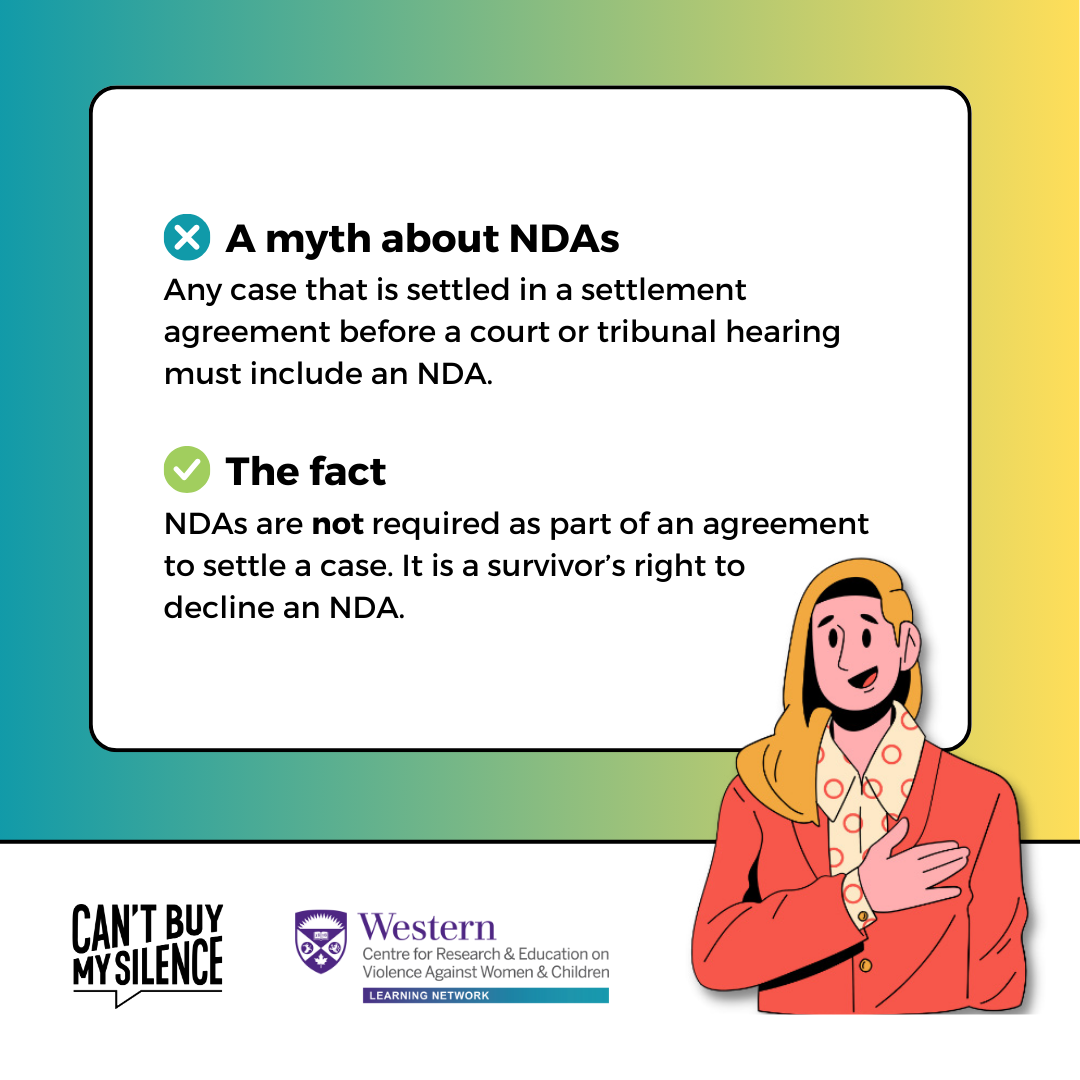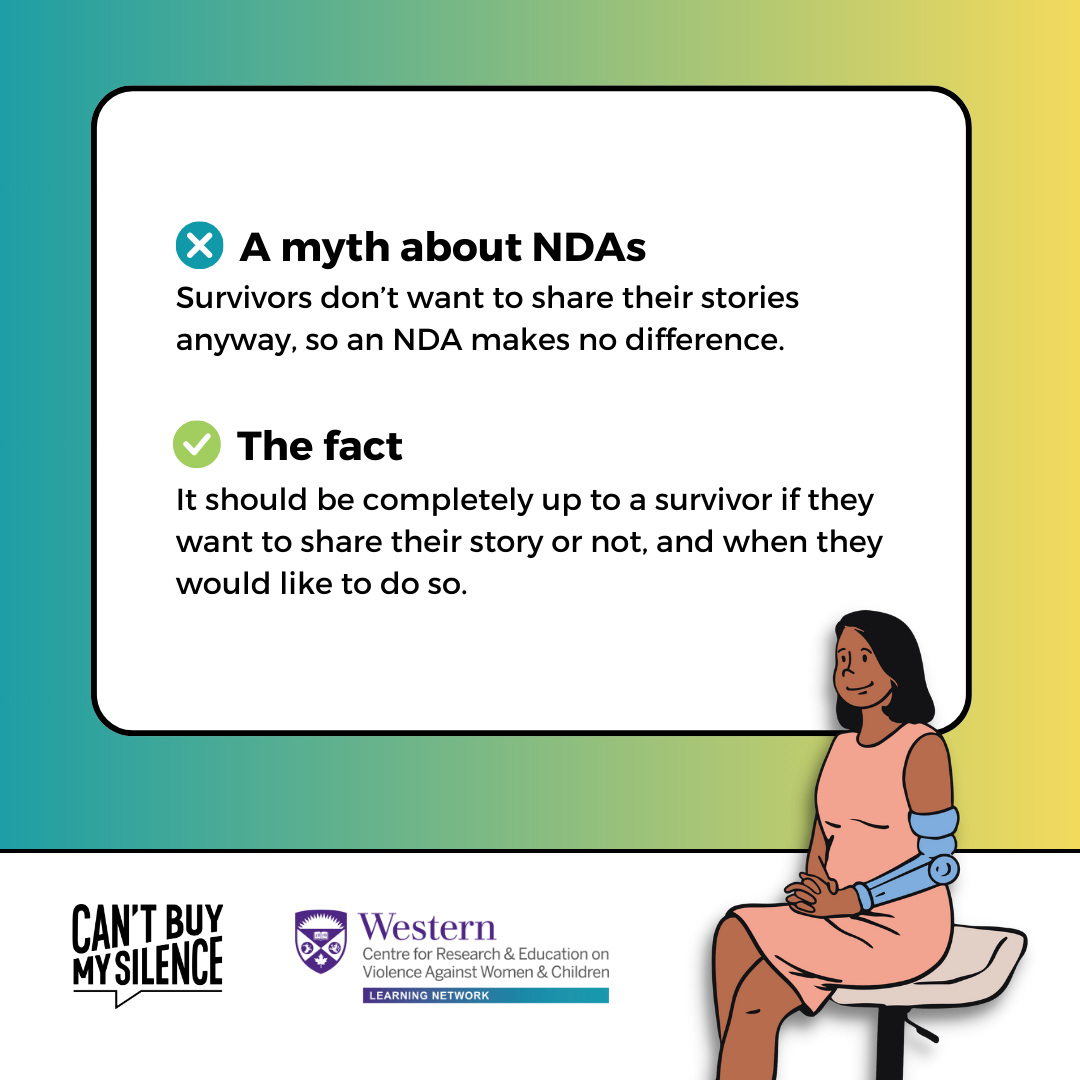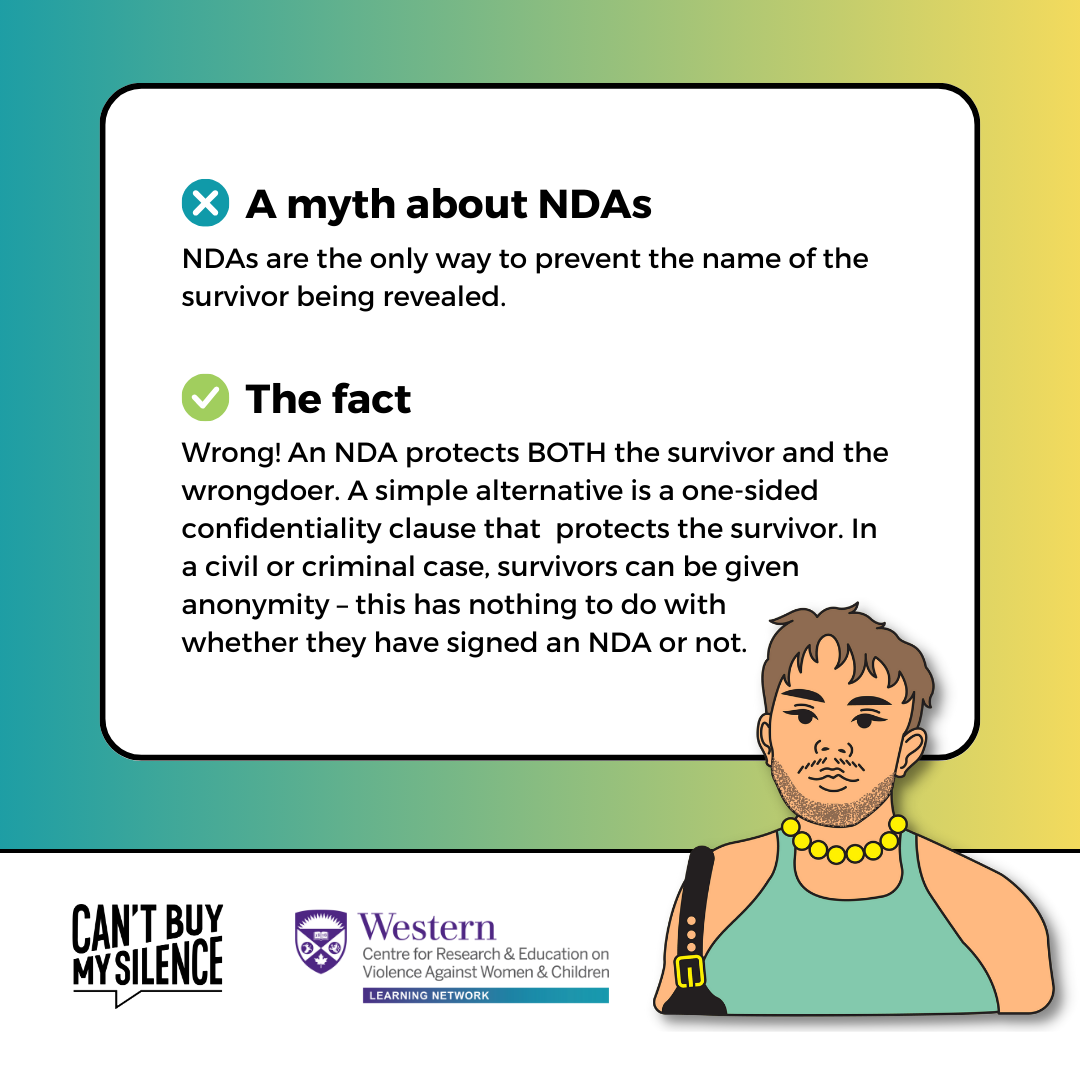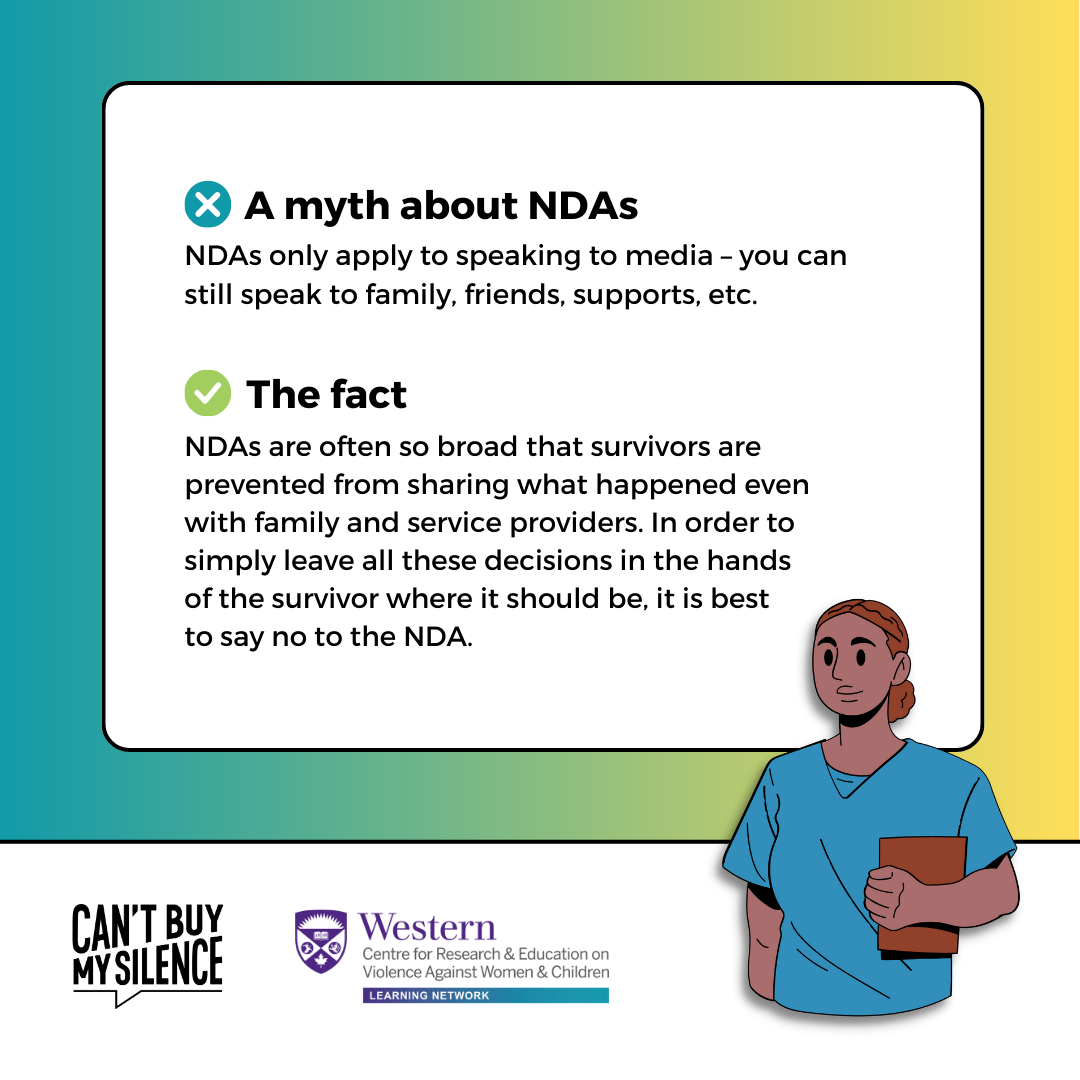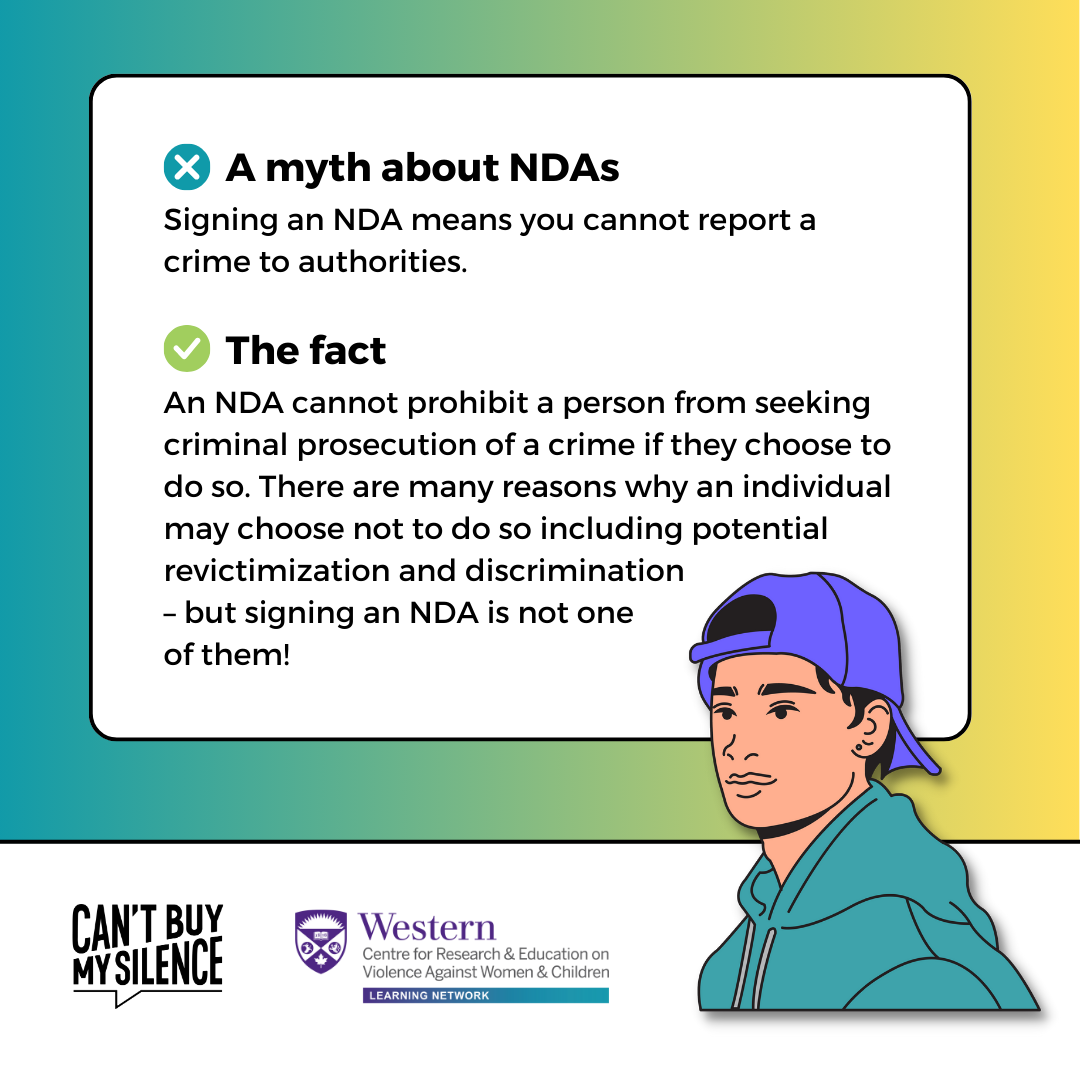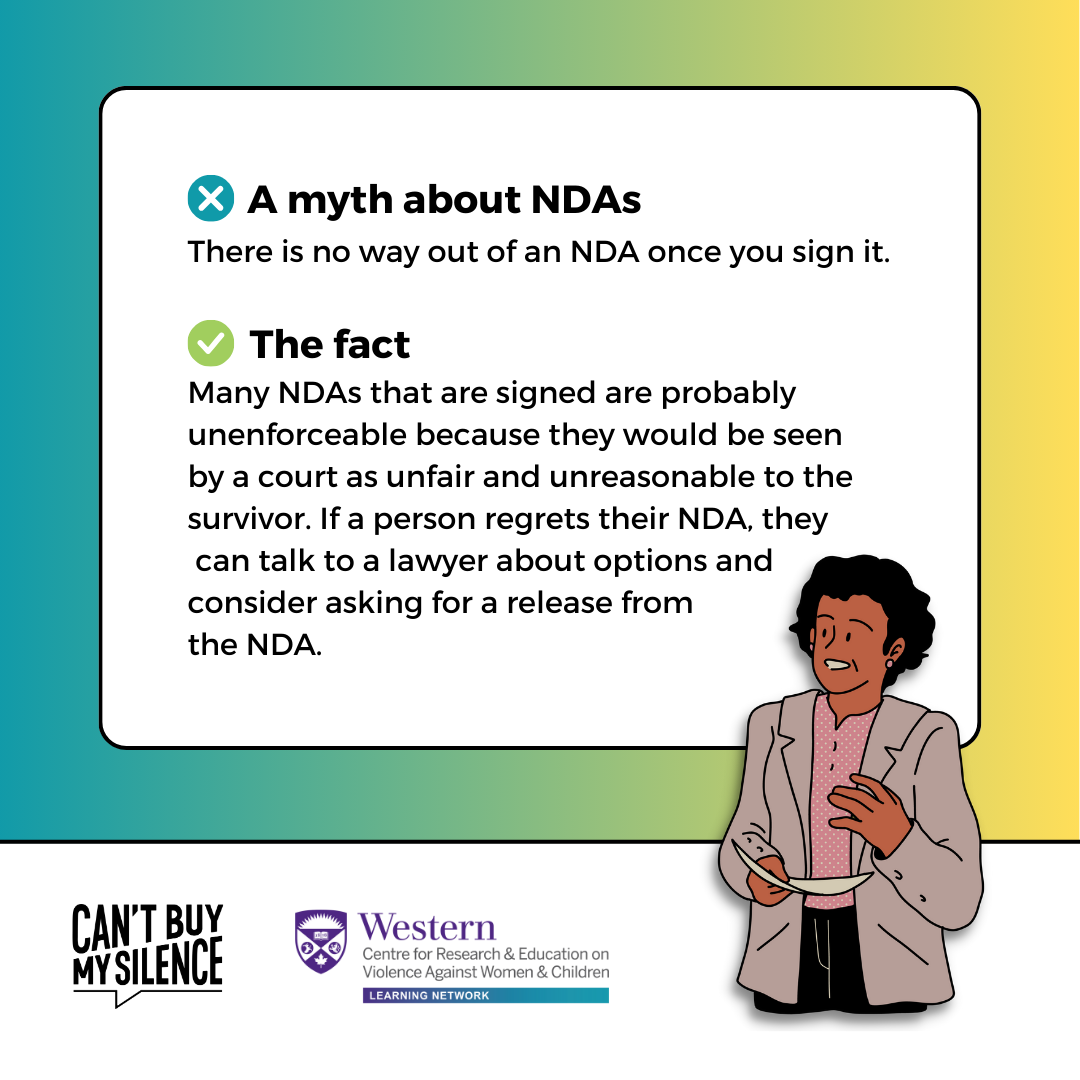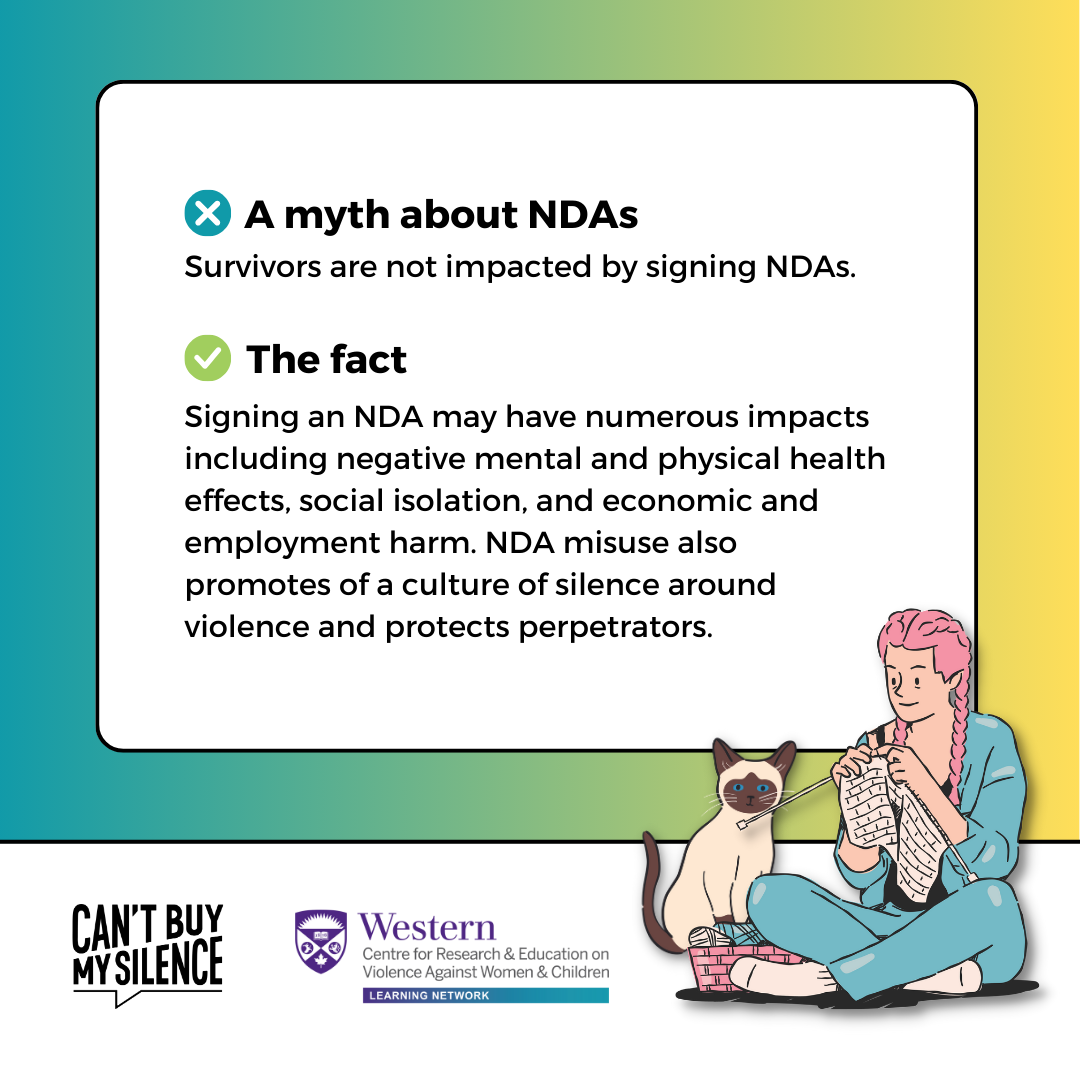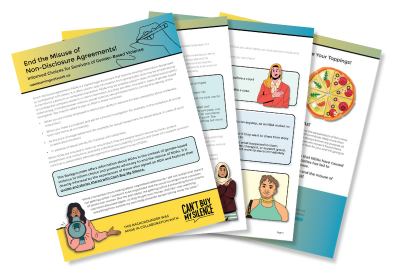Our Work
.
End the Misuse of Non-Disclosure Agreements! Informed Choices for Survivors of Gender-Based Violence
A non-disclosure agreement (NDA) is a signed legal document that restricts sharing information designated as ‘confidential’ with others. It is often used to stop information from going public that may be embarrassing or harmful to a person’s or company’s reputation.
NDAs may be properly used in cases of intellectual property or confidential company research or client information, but they are often misused in cases of gender-based violence (e.g., intimate partner violence, sexual violence, sexual harassment) to conceal the identity of the wrongdoer. You may be asked to sign an NDA in these instances:
- When you are initially employed, to restrict your ability in advance to raise complaints about workplace misconduct
- When you make a complaint and ask for a formal investigation (for example, in the workplace, at a long-term care home, at a university)
- As the price of a legal settlement (for example, for sexual harassment, for sexual assault, in cases of racist or sexist discrimination)
- In advance of sexual activity (for instance with celebrities)
When NDAs are misused to cover up misconduct, they are weaponized to silence survivors, protect perpetrators and institutions, and deny individual accountability. Survivors and those who support survivors continue to passionately advocate against the widespread misuse of NDAs.
This Backgrounder offers information about NDAs in the context of gender-based violence to inform choice and promote advocacy to end the misuse of NDAs. It is directly informed by the experiences of those who signed an NDA and features their quotes and stories shared with Can’t Buy My Silence.
“While I remember them talking about negotiated settlements, I did not realize that meant not getting justice. I wanted it to be negotiated that he would no longer have a position of power over women. But the part about me getting justice & preventing future victims was never discussed again. As they fought over money, I felt like I was watching everything from outside my own body; powerful people taking away my voice.”[1]
This Backgrounder was made in collaboration with: Can’t Buy My Silence.
Use of NDAs is Widespread
It is estimated that 95% of civil settlements now include an NDA as part of the template language in a "release" from a claim.[2] This does not mean they are required or desirable.
NDAs are typically presented as “rote” as in “everyone signs one.” Survivors are rarely informed about other options (besides an NDA) to protect their own privacy, do not understand the legal language and its consequences when they sign the agreement, and many survivors describe signing under pressure by lawyers and institutions. The knowledge and power gap between survivors on one hand, and lawyers and union or institutional representatives on the other is often exploited to make survivors feel powerless.
Lawyers and mediators can and have played an important role in ensuring fair mediation and supporting survivors. Ongoing advocacy to increase trauma- and violence-informed mediation will be useful in increasing the capacity of lawyers and mediators to respond to gender-based violence and end the misuse of NDAs.
The pervasiveness of NDA misuse is difficult to track due to the secretive nature of NDAs themselves, making this an insidious form of violence. Indeed, NDAs are used to hide the extent of gender-based violence occurring within organizations.[4]
To help track NDA use, Speak Out Revolution has created a global dashboard. Their data reports that:
- 36% of people who report workplace harassment, bullying, and discrimination, (including gender-based violence) sign an NDA.[5]
- These numbers are higher for women and for people of colour.[6]
Lawyers and advocates have shared their own experiences as well that low-wage workers, immigrant workers, and workers of color often face financial barriers finding lawyers to take on their sexual-harassment and discrimination cases to assist with NDA negotiations.[7]
Myth versus Reality of NDAs
The misuse of NDAs is reinforced by myths around what NDAs are, what NDAs can and cannot include, and the impacts of NDAs. Join us in dispelling the myths.
Click here for the myths and facts as social media posts that you can share!
MYTH
Any case that is settled in a settlement agreement before a court or tribunal hearing must include an NDA.
FACT
NDAs are not required as part of an agreement to settle a case. It is a survivor’s right to decline an NDA.
MYTH
Survivors don’t want to share their stories anyway, so an NDA makes no difference.
FACT
It should be completely up to a survivor if they want to share their story or not, and when they would like to do so.
For some survivors, it is healing to share what happened to them, whether to a friend, family member, Elder, therapist, or support group. It may be the case that a survivor does not want to share immediately but decides to do so later in their life.
MYTH
NDAs are the only way to prevent the name of the survivor
being revealed.
FACT
Wrong! An NDA protects BOTH the survivor and the wrongdoer. A simple alternative is a one-sided confidentiality clause that protects the survivor. In a civil or criminal case, survivors can be given anonymity – this has nothing to do with whether they have signed an NDA or not.
MYTH
NDAs only apply to speaking to media – you can still speak to family, friends, supports, etc.
FACT
NDAs are often so broad that survivors are prevented from sharing what happened even with family and service providers. As a result, survivors may be prevented from seeking the healing services and supports they need.
In order to simply leave all these decisions in the hands of the survivor where it should be, it is best to say no to the NDA.
MYTH
Signing an NDA means you cannot report a crime to authorities.
FACT
An NDA cannot prohibit a person from seeking criminal prosecution of a crime if they choose to do so. There are many reasons why an individual may choose not to do so including potential revictimization and discrimination – but signing an NDA is not one of them!
MYTH
There is no way out of an NDA once you sign it.
FACT
Many NDAs that are signed are probably unenforceable because they would be seen by a court as unfair and unreasonable to the survivor. If a person regrets their NDA, they can talk to a lawyer about options and consider asking for a release from the NDA.
“When I was a little girl, I was sexually assaulted by a member of the church… Following the signing of the NDA, I found out that a bishop in the United States declared all NDAs null and void. As a result, I wrote to the bishop of the diocese of a Canadian city and requested to be released from my NDA because I was keeping a secret that wasn’t mine to keep. The request was approved.”[8]
MYTH
Survivors are not impacted by signing NDAs.
FACT
Conversations with survivors reveal that signing an NDA may have numerous impacts on survivors including:[9]
- Negative mental and physical health effects
- “Having to sign an NDA was the first time I felt helpless, hopeless, and powerless. It was a feeling worse for me than the year and a half of sexual harassment I endured from my employer. I lost my job, I lost my voice, I became jaded and distrustful of all people in positions of power. I became jaded with the idea that anyone cared about justice or even kindness.”[10]
- “Having to sign an NDA was the first time I felt helpless, hopeless, and powerless. It was a feeling worse for me than the year and a half of sexual harassment I endured from my employer. I lost my job, I lost my voice, I became jaded and distrustful of all people in positions of power. I became jaded with the idea that anyone cared about justice or even kindness.”[10]
- Social isolation
- “I was naïve enough to think the NDA might even help me move on, that it would prevent me from dwelling on it with my new employer or friends. In reality, it has just created distance and isolation, and has prolonged the trauma of that experience.”[11]
- “I was naïve enough to think the NDA might even help me move on, that it would prevent me from dwelling on it with my new employer or friends. In reality, it has just created distance and isolation, and has prolonged the trauma of that experience.”[11]
- Economic and employment harm. For instance, if a survivor cannot explain their change in employment or time off which results in them losing a job
- “From this day I have lived paycheque to paycheque barely able to make ends meet. I have never been able to re enter that same industry which has limited me financially. I have never been able to find adequate support and have struggled with my mental health on a regular basis.”[12]
There are also broader, societal impacts of NDA misuse including promotion of a culture of silence around gender-based violence and ongoing abuse by perpetrators who are protected through NDAs.
“I was asked to sign an NDA so that I would not tell anyone my experience of sexual harassment to protect the university and the person accused of sexual harassment.”[13]
Considering Signing an NDA? Choose Your Toppings!
If you are considering signing an NDA, remember that the person or organization asking you to sign the NDA does not want the information to go public, so you have bargaining power!
This means that you can say no, and since the other side doesn’t want the information to come out in court, they often agree to a settlement without an NDA. Confidentiality doesn’t have to go both ways – you can ask for a one-sided confidentiality clause for yourself without giving the same to the other side.
You can make choices about what YOUR agreement looks like. The “toppings” you get do not have to be the same toppings as the other party to the agreement.
Moving Forward: Ban the Misuse of NDAs!
“I'm going to gather up the courage to fight. I will not sign an NDA to allow the perpetrators of this crime to hide behind my employer. For my child, for the younger women who will contribute, likely more than others, to the best interest of their companies and projects, I will fight. I've always known my purpose at times in life. This one was clear, to be the voice of those who haven't found theirs. To the victims who have suffered in silence, I'm here for you, and I'm going to fight the fight!! Enough IS Enough!!!”[14]
The misuse of NDAs and the harms that NDAs have caused for survivors, organizations, and societies has led to advocacy to restrict or end their misuse.
To learn more and support efforts to end the misuse of NDAs, check out Can’t Buy My Silence!
Citation
Macfarlane, Julie and Lalonde, Dianne with contributions from survivors who submitted their testimonies to Can’t Buy My Silence. 2023. End the Misuse of Non-Disclosure Agreements! Informed Choices for Survivors of Gender-Based Violence. Learning Network Backgrounder. London, Ontario: Learning Network, Centre for Research & Education on Violence Against Women & Children.
References
[1] Story 6. https://www.cantbuymysilence.com/testimonies/story-6
[2] Can’t Buy My Silence. NDA info. https://www.cantbuymysilence.com/nda-info
[3] Story 5. https://www.cantbuymysilence.com/testimonies/story-5
[4] Weston, M. A. (2021). Buying secrecy: Non-disclosure agreements, arbitration, and professional ethics in the #MeToo era. University of Illinois Law Review, 2021(2), 507-544.; Willson E, & Kerr G. (2023). Gender-based violence in girls’ sports. Adolescents, 3(2), 278-289. https://doi.org/10.3390/adolescents3020020; Standing Committee on Canadian Heritage. (2023). Evidence number 081: Public part only. https://publications.gc.ca/collections/collection_2023/parl/xc61-1/XC61-1-2-441-81-eng.pdf
[5] Speak Out Revolution. The Speak Out Dashboard. https://www.speakoutrevolution.co.uk/dashboard; Also see Fox-Kirk, W., Gardiner, R. A., Finn, H., & Chisholm, J. (2020). Genderwashing: The myth of equality. Human Resource Development International, 23(5), 586-597.
[6] Speak Out Revolution. The Speak Out Dashboard. https://www.speakoutrevolution.co.uk/dashboard
[7] Russell-Kraft. (2018). How to end the silence around sexual-harassment settlements. The Nation, Jan 12. https://www.thenation.com/article/archive/how-to-end-the-silence-around-sexual-harassment-settlements/
[8] Story 89. https://www.cantbuymysilence.com/story-89
[9] Prasad, V. (2018). If anyone is listening, #metoo: Breaking the culture of silence around sexual abuse through regulating non-disclosure agreements and secret settlements. Boston College Law Review, 59(7), 2507-2550.; Pagan, A. (2021). The murder of knowledge and the ghosts that remain: Non-disclosure agreements and their effects. Culture and Organization, 27(4), 302–317.; House Committee on the Judiciary. (2021). How forced arbitration keeps victims of sexual violence and sexual harassment in the shadows. YouTube, Nov 16. https://youtu.be/JC5y1GbfUVk; Avalon Sexual Assault. (2022). The trauma impacts of non-disclosure agreements (NDA's) in sexual violence cases. YouTube, May 2. https://www.youtube.com/watch?v=mvVTFhYZBL0
[10] Story 36. https://www.cantbuymysilence.com/story-36
[11] Story 45. https://www.cantbuymysilence.com/story-45
[12] Story 18. https://www.cantbuymysilence.com/testimonies/story-18
[13] Story 36. https://www.cantbuymysilence.com/story-36
[14] Story 78. https://www.cantbuymysilence.com/story-78
Share these social media graphics and tag us @LNandKH and @cbmsilence:
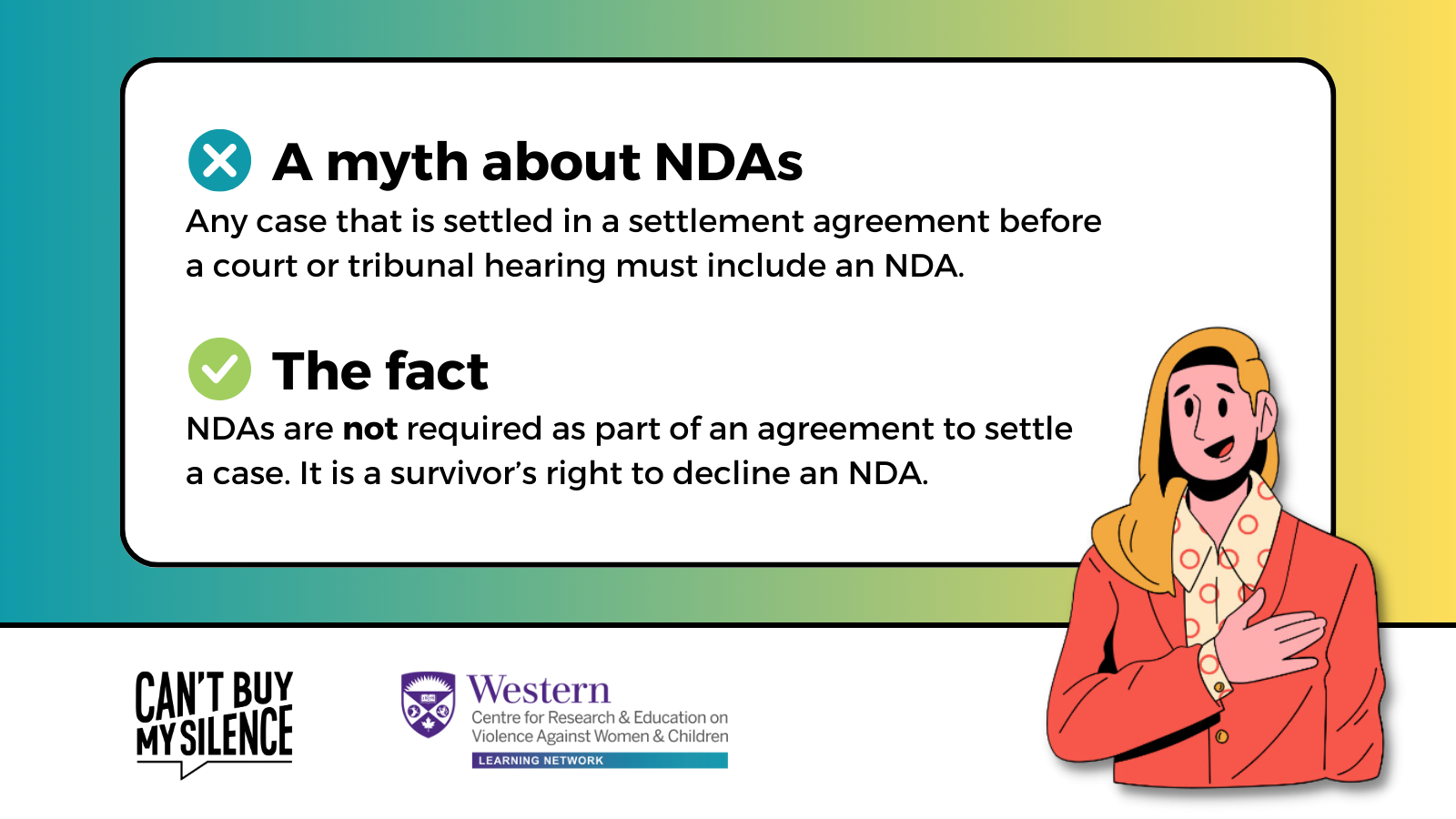
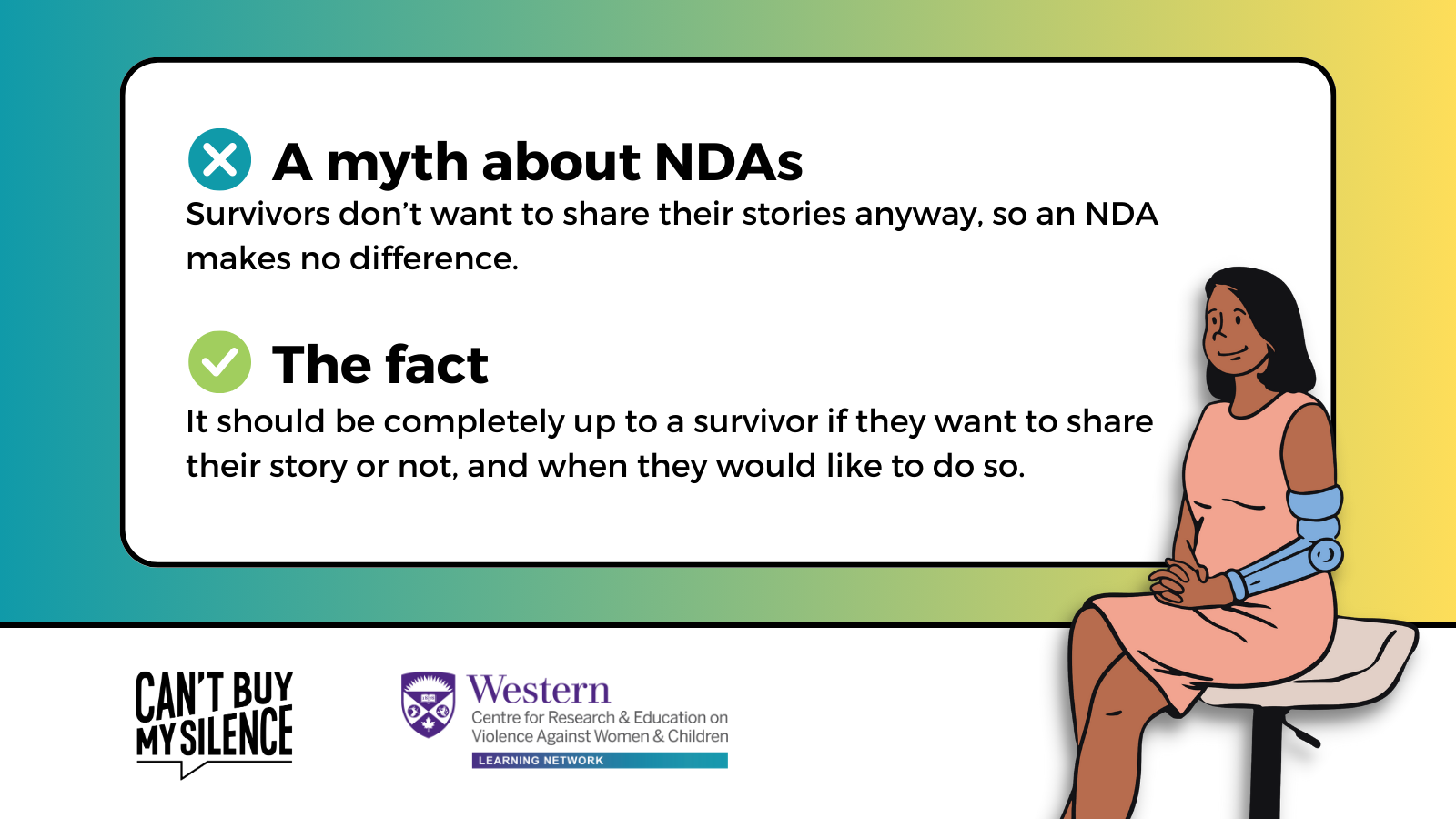
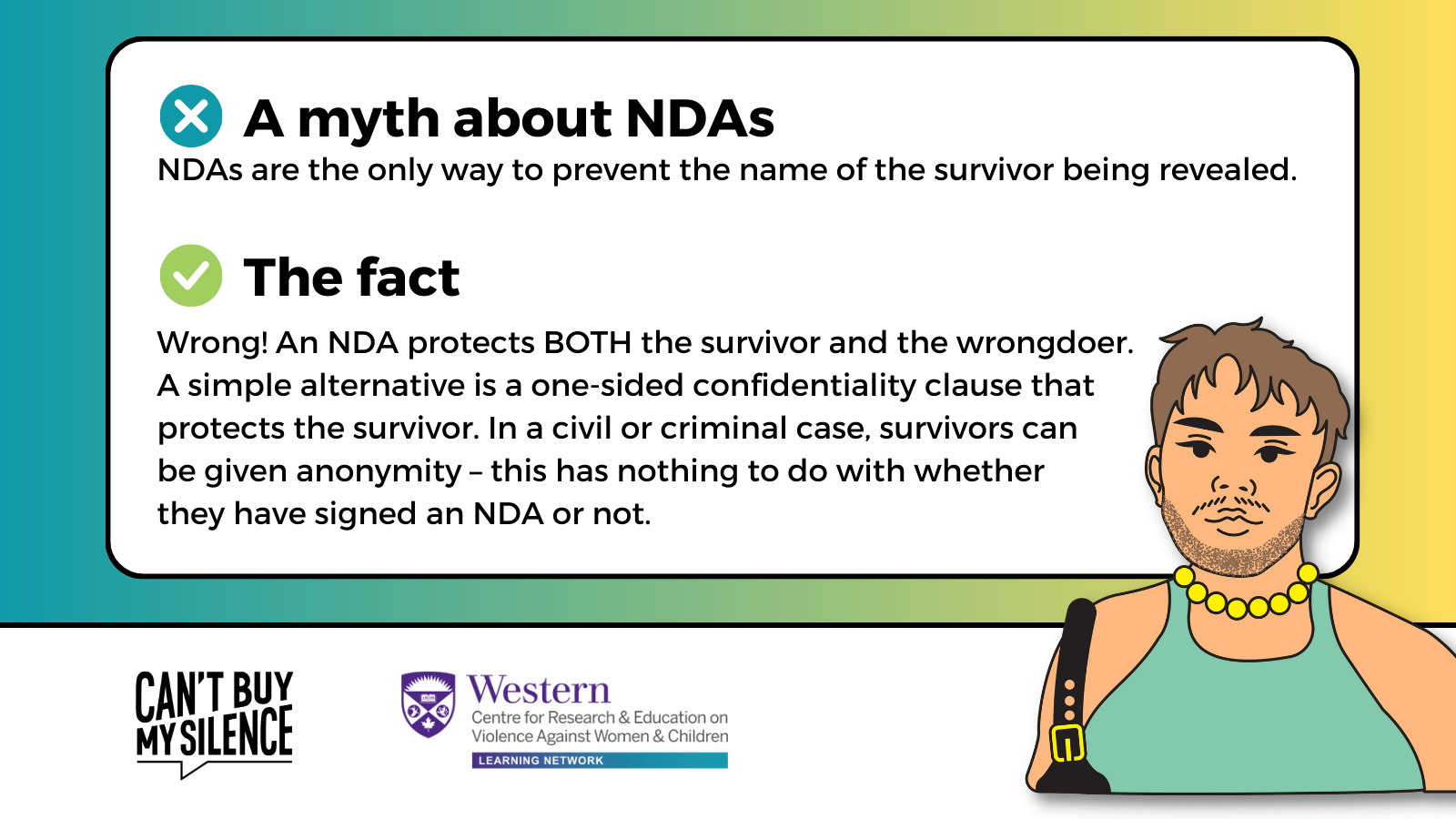
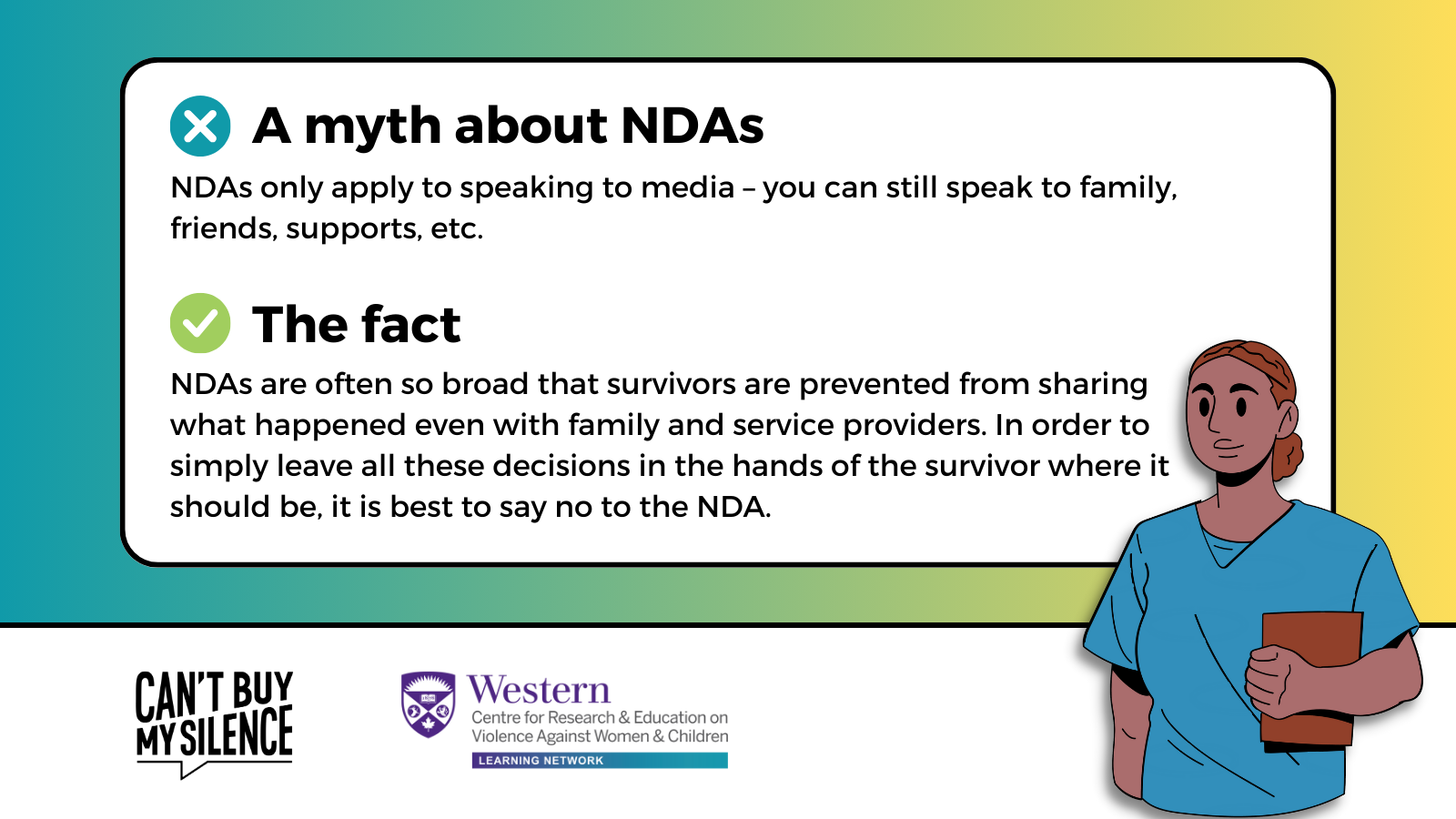
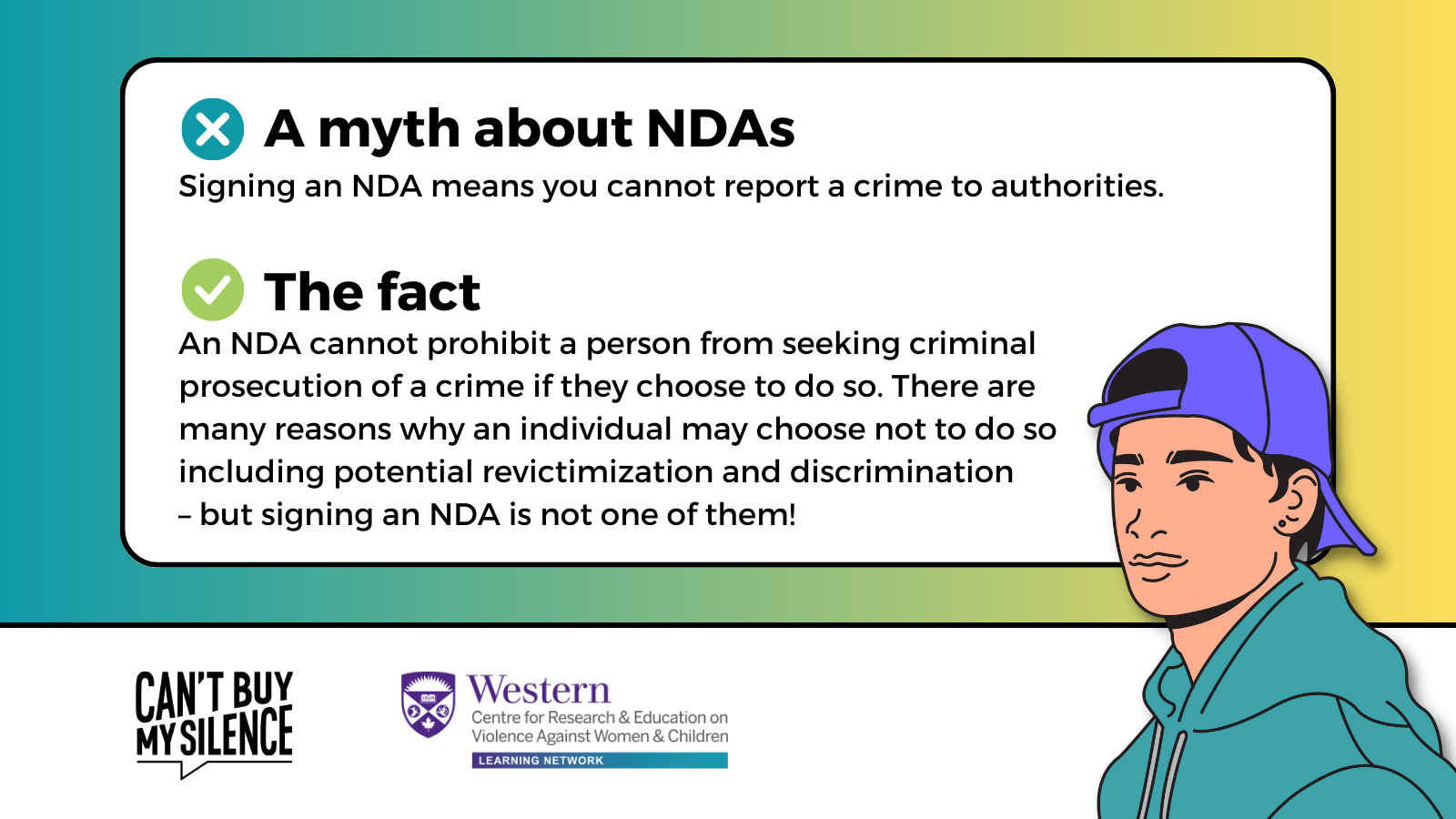
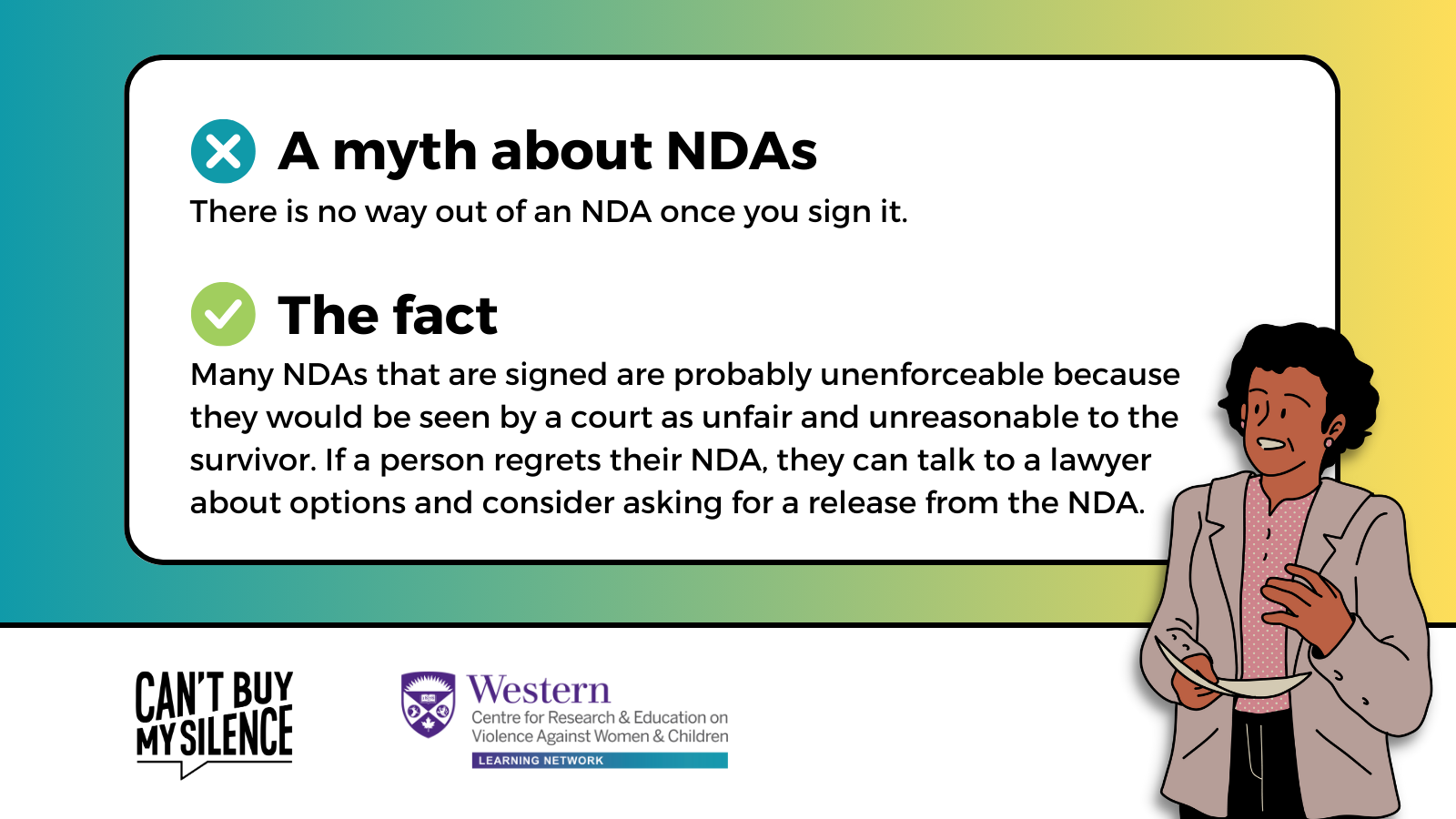
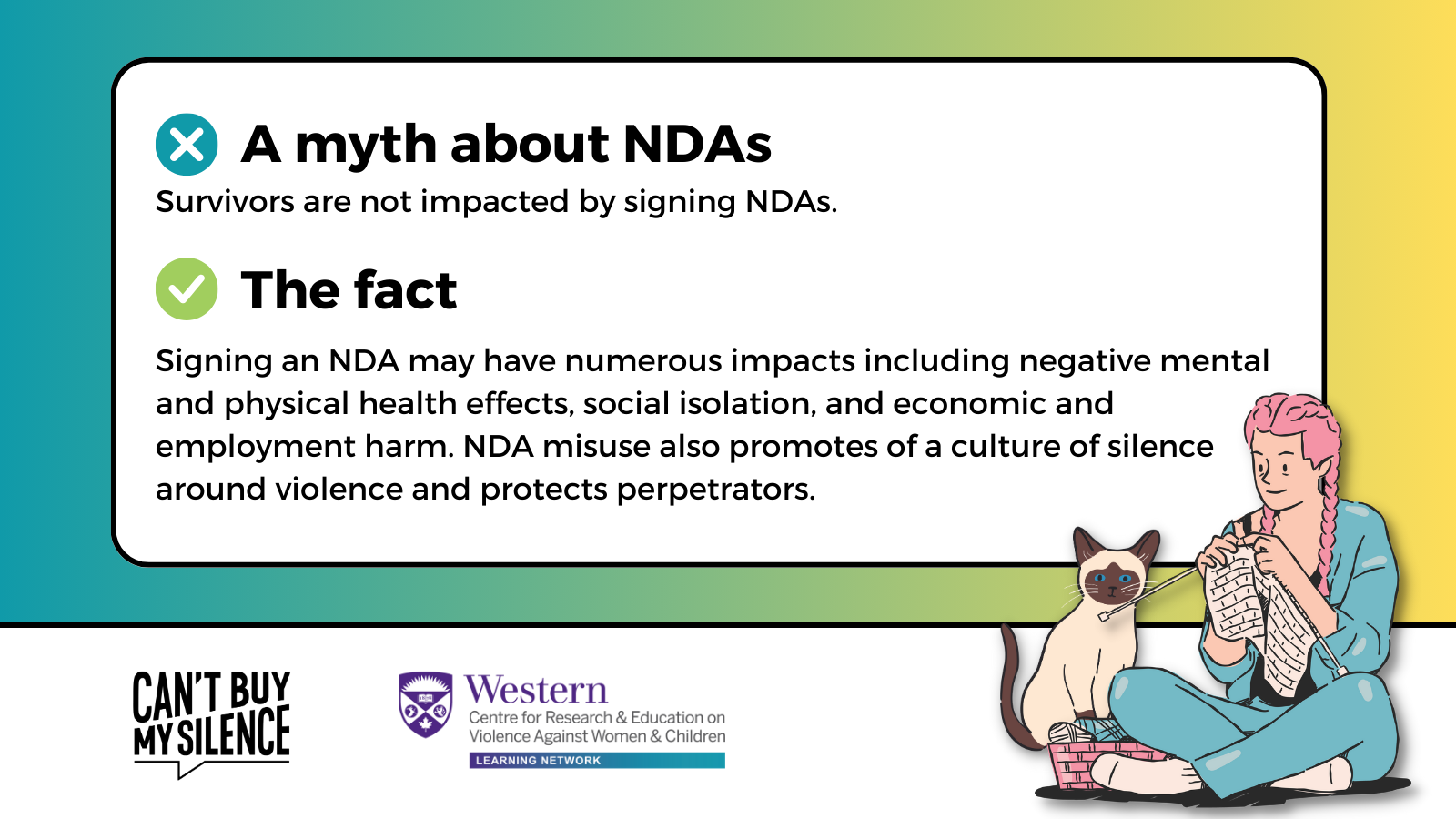
Facebook and Instagram
